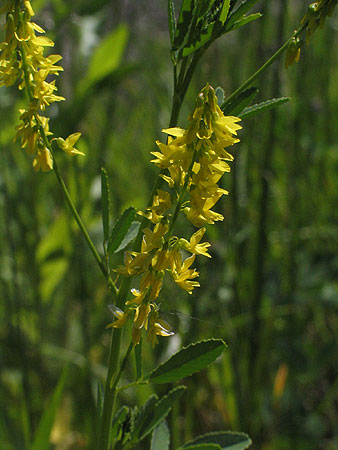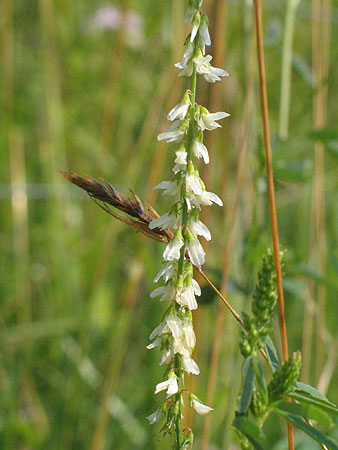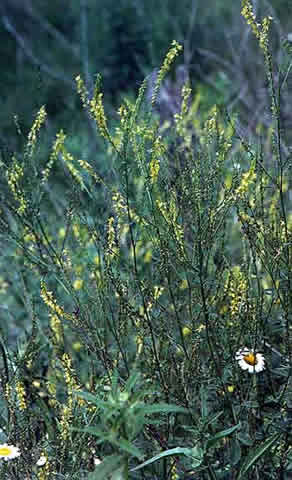
Habitat
Sweet clover has adapted to a variety of conditions, withstanding both hot and cold climates. It grows well in direct sunlight and in partial shade. Sweet clover, however, cannot tolerate dense shade. Even the thick growth of a second-year sweet clover produces enough shade to cause its own lower leaves to fall. Sweet clover seems to prefer calcareous or loamy soils with a pH level of 6.5 or greater. Areas most likely to contain sweet clover include roadsides, abandoned fields, railroad ballasts, pastures and any unflooded, open natural community such as a prairie.
Life History
Sweet clover is an obligate biennial, which means that the plant always puts its energy into developing a healthy root system during the first season, and during the second season, it flowers, sets seed and dies. In the first growing season, sweet clover is entirely vegetative. A small, branched stem with clover-like leaves is visible. In late summer, the root continues to develop. By the second year sweet clover has a strong taproot and root crown from which new shoots emerge. The plants flower May-September, producing hardy little seeds that may remain viable in the soil for years (up to 30 years or more). After setting seed the plant dies. Because sweet clover dies after the second year, seed production is critical for its continued existence, and is the key to controlling it. If the flowering stage of sweet clover is halted, so is the spreading of the plant - as long as management procedures continue long enough to deplete viable seeds remaining in the soil.
Similar Species
White and yellow sweet clover are distinguished from other members of the pea family by the following combination of characteristics. The leaves of yellow and white sweet clover are divided into three leaflets that are finely toothed, the middle leaflet occurs on a distinct stalk, and the flowers occur in a long narrow inflorescence. No other member of the pea family has this combination of characteristics. Sweet clover should be accurately identified before attempting any control measures. If identification of the species is in doubt, the plant's identity should be confirmed by a knowledgeable individual and/or by consulting appropriate books.
Distribution
Sweet clover is native to Europe and Asia. It can be found in all 50 United States. The earliest records of its occurrence in North America date to 1664. More recently, around the turn of the century, sweet clover was cultivated as a forage crop and soil builder. Today it also is used as a wildlife cover crop and in production of honey. Each species of sweet clover has been recorded from every county in Illinois, and adventive populations occur in disturbed habitats throughout most of the state. Since this exotic is considered economically important, and thus will continue to be planted, it will remain a problem for land managers well into the future.

